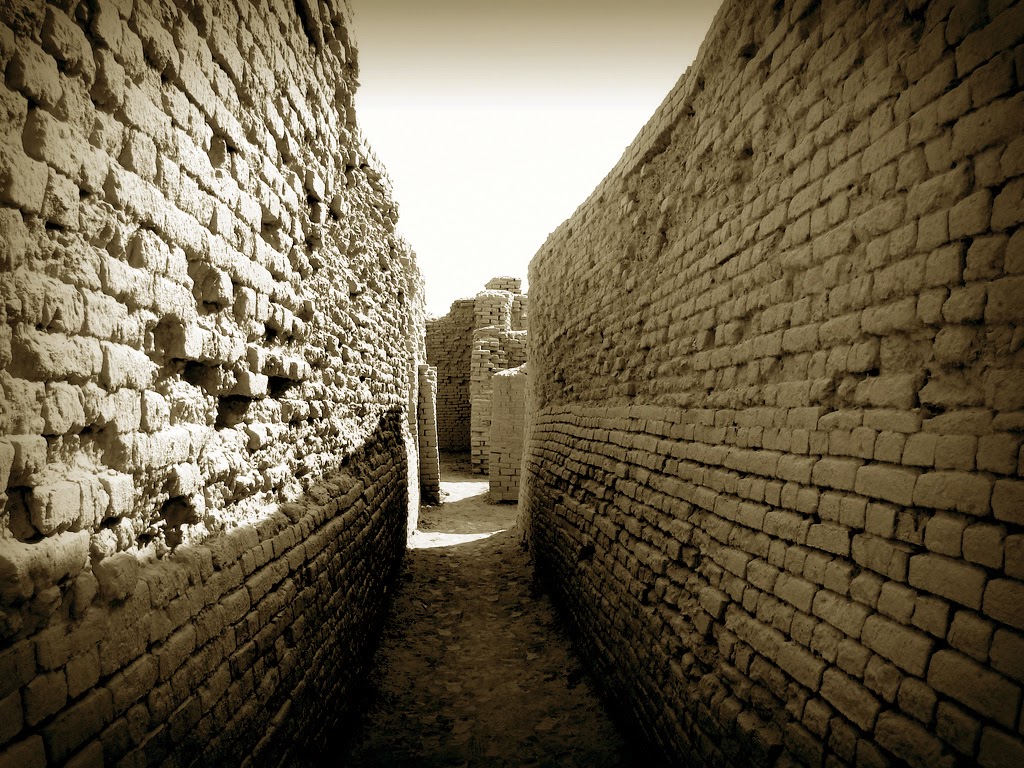A compendium of interesting places, hidden wonders, Beautiful Places, strange travel destination, tourist attractions.
Sunday, 23 February 2014
The Ancient City of Mohenjo-Daro Pakistan
Mohenjodaro is an ancient city of
Pakistan, approximately 5000 year old city located at northwestern Sindh of
Pakistan. Mohenjodaro is historical significance on the UNESCO World Heritage
list, and major tourist attraction because of its fascinating archaeological
site. This place displays the real ruins life of Indus Valley civilization
which is best persevered urban ruins in South Asia. Mohenjodaro was built circa
2,600BCE with a population of 35,000 to 50,000, one of the largest and most
advanced cities at that time with wonderfully sophisticated civil engineering
and urban planning. The city was abandoned for unknown reason perhaps due to
river courses.
It’s a great must visit city for
those who’ve interest in history. But for that you must choose bit cooler
months, which starts from October till March. On the other side, you might be
prepared for yourself for blisteringly hot weather. The highest temperature
recorded was 53.5°C (128°F), here on 26 May 2010, which is highest reliably
measured temperature in Asia, and the fourth highest temperature recorded
anywhere in the world. Mohenjodaro ruins were first discovered in 1911. Its
name has associated in Sindhi Language, & also known as Harappan Civilization
(Another main archaeological site at Harappa in Pakistan).
It is estimated, that one third
site has been explored. Mohenjodaro site is inside a complex surrounded by a
wall and only accessible via main entrance gate. It is only pedestrian’s area,
and can be easily covered on foot. The complex open time is varied depends on
hot and cooler months. Cold drinks, water and tea are main choices to fight
with dry climate; only one PTDC hotel offers some good food which is already
catering too many people. There are also a few small general stores and stalls
outside the complex that sell some food such as snacks, soft drinks, and
bottled water. There’re only two lodging facilities here, Archaeology Rest
house, and PTDC Motel. Tourist can find various things outside complex, like
gift shop, seals, stones, souvenirs, books written on Mohenjodaro. Source: Charismatic Planet
Saturday, 22 February 2014
The Historic Bank Vaults of Libya
One of the finest examples of
Berber architecture is “Qasr Al Haj”, situated on the Tripoli-'Aziziya-Al Jawf
route in Libya approximately 130 kilometer from Tripoli. Qasr Al Haj actually
built with bricks and clay. This circular earth-colored building is uninspired
from the outside, with a door that leads to the large courtyard inside, which surrounding
are rows of small windows arranged in three stories that looks like open
catacombs stacked one on top of another, or a fortified village at best.
Qasr is an Arabic word for “Castle”
and Haj meant a pilgrimage. The Haj is the annual pilgrimage undertaken by
Muslims to Makkah an obligations that preferably has to be done by all Muslims
at least once in their lifetime.
In the 12th century the Qasr is
built by Shikh A'ebdella Ben Muhammad Ben Hilal Ghanem. “Qasr Al Haj” was a
place where pilgrims who went on the Haj stored their belongings before they
went, similar to modern airport locker rooms or bank vaults, so they won’t be
weighed down with several belongings during their Haj trip. The statement
mentioned by some historians that the Libyans were the first to invent the
banking system, and hence you are looking at one of the oldest banks in the
world. “Qasr Al Haj” was later used as communal granary and olive oil storage
rooms, for villagers who did not have adequate space at home to store these
staples.
It is also speculated that the
number 114 was used symbolically to reflect the number of Sura in the Qur'an, a
view widely accepted by villagers in the region nowadays. Every family had a
space in that Qasr where they could save food and grains for safe keeping. Source; Charismatic Planet
Subscribe to:
Posts (Atom)






















































